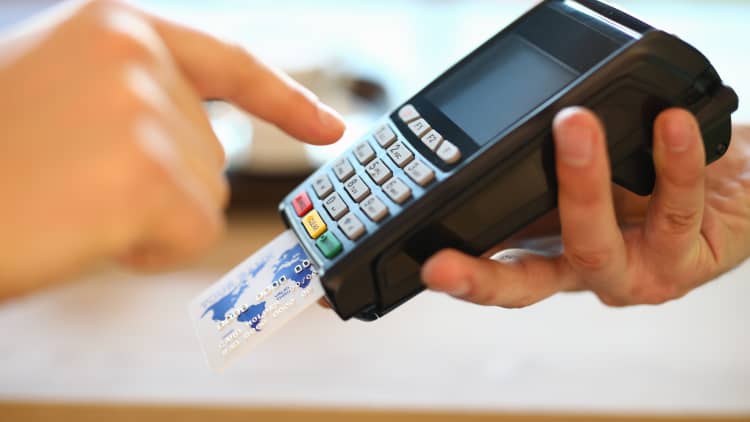Given record-high interest rates, now is not the time to be taking on more credit card debt.
The Federal Reserve is expected to further hike interest rates before the end of the year, and the average credit card interest rate is already at an all-time high. The average rate for existing accounts is at 22.77%, the highest it has been in 30 years, according to WalletHub.
Automated payment options can help credit card holders bypass late payment fees. While cardholders who use automated payment features typically set them for more than the minimum due, they also tend to pay off less of their monthly balance than customers making manual payments, according to a 2022 study.
Such cardholders will end up paying more in interest in the long run if they don’t pay their statement balance in full each month, experts say.
“You can set it up for a lower payment,” said Sara Rathner, credit cards expert and writer at NerdWallet, referring to a monthly automated card payment. “If you still have a balance, [that] will roll over as long as it’s unpaid.” But that unpaid balance will be subject to interest charges.
More from Personal Finance:
What workers on strike need to know about unemployment
From Amazon to Target: What to know about early holiday sales
Holiday shoppers brace for more financial strain this year
Avoid paying more in interest and fees by setting up your credit card automated payments to cover the entire statement balance, experts say. If you check your account online, you may also see a “current” balance that includes newer charges, but you only have to pay the statement balance in full each month to avoid interest charges.
If you can’t pay your statement balance in full, be sure to make smaller payments on a regular basis to keep current and chip away at your overall balance, said Nick Ewen, director of content at The Points Guy. Not doing so can mean hefty late fees in addition to accrued interest.
You usually can pay off your statement or current balance whenever you like. “There’s no penalty charge on your card if you pay your statement balance before the due date,” Ewen added.
Here are some of the best practices cardholders should consider:
1. Move the due date closer to your payday
Ask your lender if you can change your card payment due date to a few days after your paycheck is deposited, said Rathner. This way, you’re aware of how much money is available in your checking account before a scheduled automatic card payment goes through and you won’t overdraft your account, she added.
Log into your credit card account online or call a customer service agent to find out what features you have available to facilitate this.
2. Watch out for penalty APRs
Zero percent annual percentage rate offers are usually good for 12 to 18 months. However, if a cardholder does not make a minimum payment, the card issuer can revoke the 0% APR offer and push the customer into an APR of 29% or higher, said Ewen.

3. Consider a balance transfer or product change
If you’re carrying credit card debt, consider doing a balance transfer, said Ewen. Some credit cards offer a 0% APR for balance transfers for, as an example, a one-time fee of 3% to 5% or $5, he said. If you transfer a balance from one card to another for a 12-month 0% APR, you have a year to pay off the balance as long as you pay it off by the time the introductory special is over.
Additionally, if the terms change with one of your existing credit cards, most larger credit card companies will offer you a product change, said Winnie Sun, co-founder and managing director of Sun Group Wealth Partners in Irvine, California.
Instead of closing the affected card, move to another card from the issuer that has no annual fee, she added. This is helpful if you have a high-fee credit card and want to keep the overlying credit line high.
“It doesn’t require credit pool and reduces credit card expenses,” said Sun, a member of CNBC’s Advisor Council. Call the provider and see if a product change is available.
Join CNBC’s Financial Advisor Summit on Oct. 12, where we’ll talk with top advisors, investors, market experts, technologists and economists about what advisors can do now to position their clients for the best possible outcomes as we head into the last quarter of 2023 and face the unknown in 2024. Learn more and get your ticket today.

